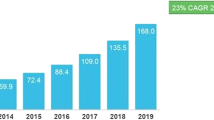Abstract
Safapp is a tool that crawls and analyses data from social media (specially Twitter and blogs) in the context of radicalization detection. This app has been developed in the context of SAFFRON European project. This paper focuses on the description of the semantic module of Safapp which is dedicated to the analysis of textual content of social networks and blogs, and more specifically on a newly developed module: the event extractor. With this module we expect to go one step further in the development of useful tools to track and analyze online propaganda.


Similar content being viewed by others
Notes
MUC: Message understanding conferences (MUC) initiated and financed by DARPA (Defense Advanced Research Projects Agency) to encourage the development of new and better methods of information extraction. The MUC-4 topic was Terrorist activities in Latin America (Source: Wikipedia).
Synonyms extracted from Wordnet.
We first focus on events extracted from blogs because they tend to be more complete in terms of observed arguments. Although some events can be found in Twitter, they present normally very few arguments.
References
Agraval R, Imielinski T, Swami A (1993) Mining association rules between sets of items in large databases. In: Proceedings of the 1993 ACM SIGMOD international conference on management of data’93. ACM, New York, pp 207–216
Aone C, Ramos-Santacruz M (2000) Rees: a large-scale relation and event extraction system. In: ANLP, pp 76–83
Baker CF, Fillmore CJ, Lowe JB (1998) The Berkeley FrameNet project. In: Proceedings of the COLING/ACL, Montreal, pp 86–90
Becker H, Naaman M, Gravano L (2011) Beyond trending topics: real-world event identification on Twitter. Columbia University Academic Commons
Boros E, Besançon R, Ferret O, Grau G (2014) Etiquetage en rôles évènementiels fondé sur l’utilisation d’un modèle neuronal. In: TALN 2014, Marseille, pp 25–35
Carter JA, Maher S, Neumann PR (2014) Measuring importance and influence in syrian foreign fighter networks. In: The international centre for the study of radicalisation and political violence
Chambers N, Cer D, Grenager T, Hall D, Kiddon C, MacCartney B, de Marneffe M-C, Ramage D, Yeh E, Manning CD (2007) Learning alignments and leveraging natural logic. In: Proceedings of the workshop on textual entailment and paraphrasing, pp 165–170
Chieu HL, Ng HT, Lee YK (2003) Closing the gap: learning-based information extraction rivaling knowledge-engineering methods. In: 41st annual meeting of the association for computational linguistics (ACL’03), pp 216–223
Derbas N, Segond F, Padró M, Dusserre E, Dobre T, Monaci S, Mastrobuoni G (2017) Semantic analysis supporting de-radicalisation. In: Lyon: 28th international workshop on database and expert systems applications (DEXA)
Grishman R, Westbrook D, Meyers A (2005) NYU’s English ACE 2005 system description. ACE, 2005
Okazaki N (2007) CRFsuite: a fast implementation of conditional random fields (CRFs). http://www.chokkan.org/software/crfsuite
Owoputi O, Dyer C, Gimpel K, Schneider N (2012) Part-of-speech tagging for Twitter: word clusters and other advances. Technical report, CMU
Riloff E (1996a) Automatically generating extraction patterns from untagged text. In: AAAI’96, pp 1044–1049
Sakaki T, Ozaki M, Matsuo Y (2010) Earthquake shakes Twitter users: real-time event detection by social sensors. In: Conference on world wide web, WWW’10. ACM, New York, pp 851–860
Sankaranarayanan J, Samet H, Teitler B, Teitler BE, Sperling J (2009) TwitterStand: news in tweets. In: Proceedings of the 17th ACM SIGSPATIAL international conference on advances in geographic information systems, GIS’09. ACM, New York, pp 42–51
Serrano L, Charnois T, Brunessaux S, Grilhères B, Bouzid M (2012) Combinaison d’approches pour l’extraction automatique d’évènements. In: 19eme conférence sur le Traitement Automatique des Langues Naturelles (TALN 2012), Grenoble, pp 423–430
Vapnik VN (1998) Statistical learning theory. Wiley Interscience, New York
Author information
Authors and Affiliations
Corresponding author
Additional information
Publisher’s Note
Springer Nature remains neutral with regard to jurisdictional claims in published maps and institutional affiliations.
Rights and permissions
About this article
Cite this article
Derbas, N., Dusserre, E., Padró, M. et al. Eventfully Safapp: hybrid approach to event detection for social media mining. J Ambient Intell Human Comput 11, 87–95 (2020). https://doi.org/10.1007/s12652-018-1078-7
Received:
Accepted:
Published:
Issue Date:
DOI: https://doi.org/10.1007/s12652-018-1078-7




